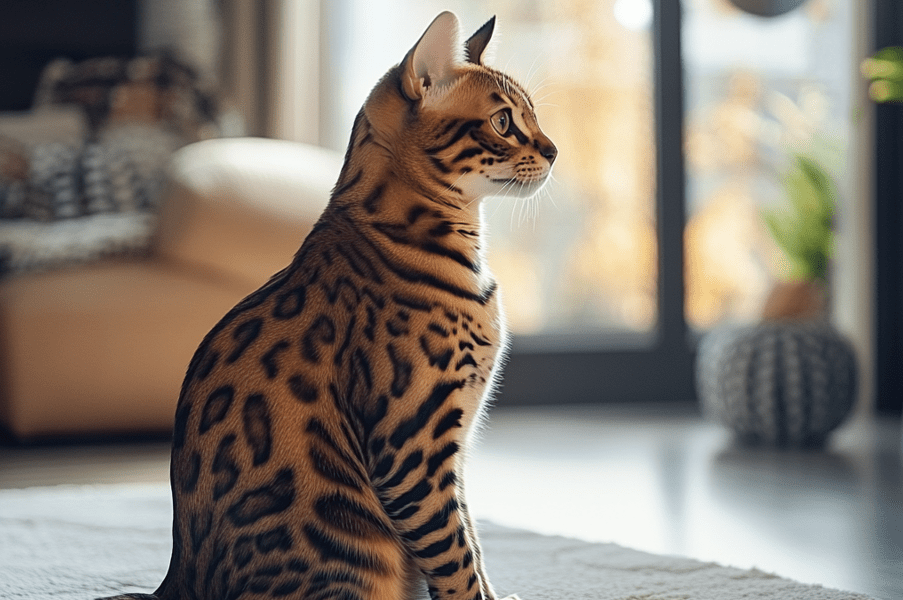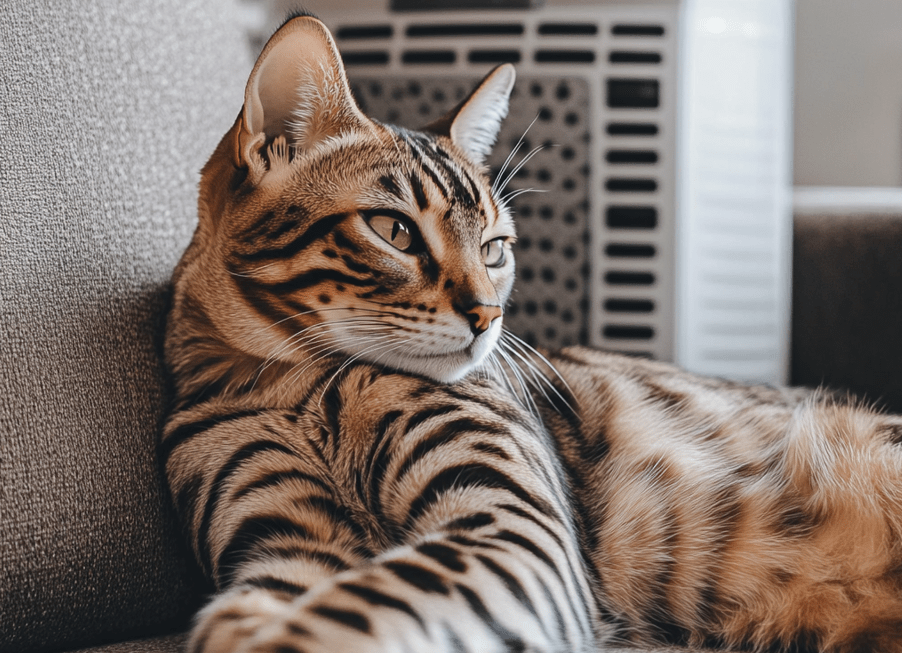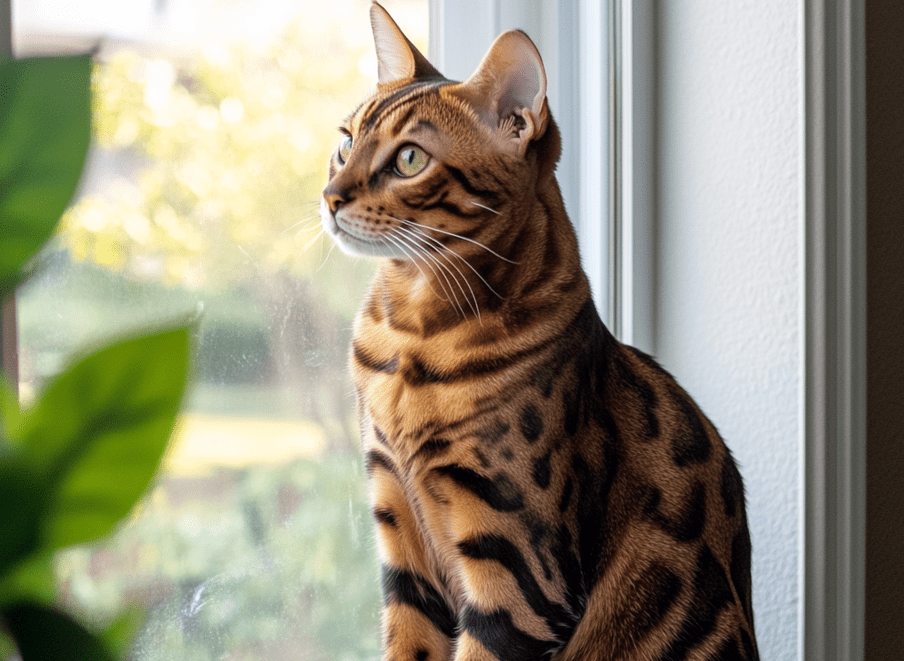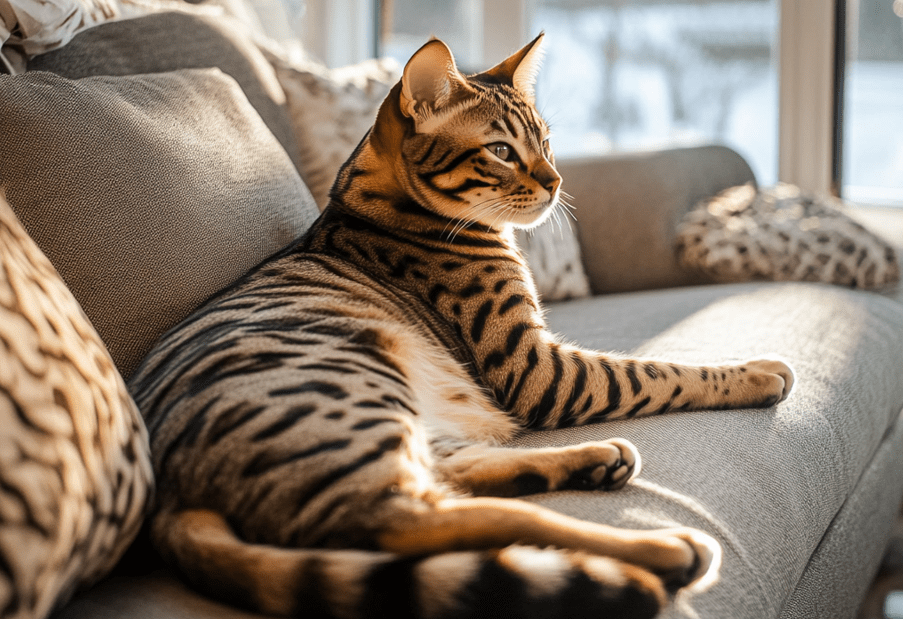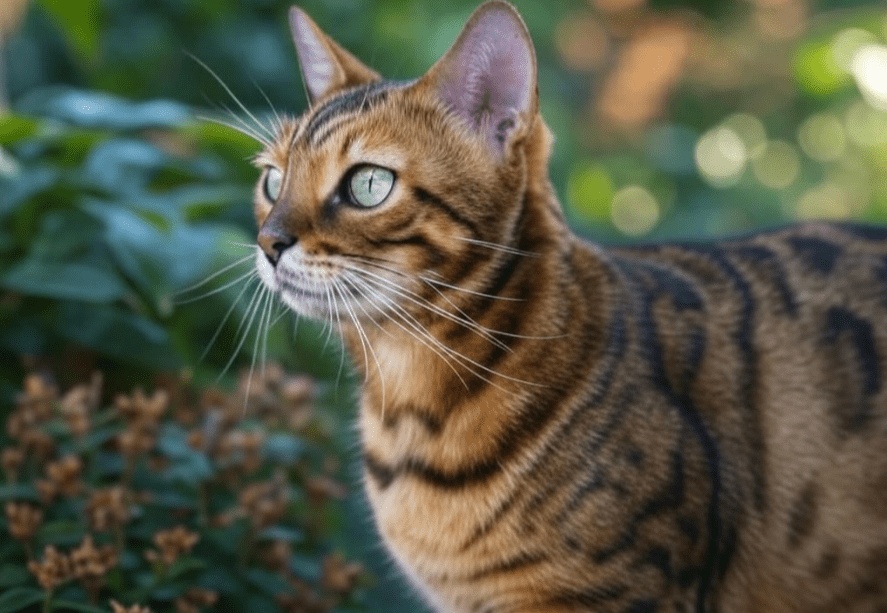
Bengal cats are known for their striking, leopard-like appearance and energetic, playful nature. These unique felines require a diet tailored to their specific needs to maintain their health and prevent obesity, which can lead to serious health issues. Feeding your Bengal cat the right food is crucial for their long-term well-being, ensuring they stay active, lean, and vibrant. In this comprehensive guide, we’ll explore the best diet for Bengal cats, offering practical advice, expert insights, and tips to help you make informed choices for your feline companion.
Understanding the Nutritional Needs of Bengal Cats
Bengal cats are a high-energy breed with a muscular, athletic build. Their active lifestyle and curious nature mean they burn more calories than less active breeds. However, without proper nutrition, Bengals are prone to obesity, which can lead to diabetes, joint problems, and urinary tract issues. A balanced diet is essential to meet their unique needs.
Key Nutritional Requirements for Bengal Cats
High-Quality Protein: Bengals are obligate carnivores, meaning their diet must primarily consist of animal-based proteins. Protein supports muscle development, energy levels, and overall health.
Healthy Fats: Fats provide energy and support skin and coat health. Omega-3 and omega-6 fatty acids are particularly beneficial for Bengals’ glossy coats.
Low Carbohydrates: Cats don’t require large amounts of carbohydrates. Excess carbs can contribute to weight gain and digestive issues.
Essential Vitamins and Minerals: Taurine, an amino acid, is critical for heart and eye health. Other nutrients like vitamin A, B vitamins, and calcium support overall wellness.
Hydration: Bengals are prone to urinary tract issues, so a diet that promotes hydration is vital.
Why Obesity Is a Concern for Bengal Cats
Obesity is a growing problem among domestic cats, and Bengals are no exception. Their love for play can diminish if they become overweight, leading to a sedentary lifestyle and further weight gain. Obesity increases the risk of:

Diabetes: Excess weight can impair insulin regulation.
Joint Problems: Extra weight puts strain on joints, leading to arthritis or mobility issues.
Urinary Tract Issues: Obesity can contribute to feline lower urinary tract disease (FLUTD).
Heart Disease: Excess fat can strain the cardiovascular system.
A proper diet, combined with regular exercise, is the best way to prevent obesity in Bengal cats.
The Best Diet Options for Bengal Cats
Choosing the right diet for your Bengal cat involves understanding the different types of cat food and their benefits. Below, we explore the main options: wet food, dry food, raw diets, and homemade meals.
1. Wet Food: The Gold Standard for Bengals
Wet food is often recommended as the best choice for Bengal cats due to its high moisture content and protein-rich formulas. Benefits include:
Hydration: Wet food contains 70-80% water, helping to prevent urinary tract issues.
High Protein: Most wet foods are meat-based, aligning with a Bengal’s carnivorous needs.
Low Carbohydrates: Wet food typically has fewer fillers and carbs than dry food.
Palatability: Bengals often find wet food more appealing, encouraging healthy eating habits.
Tips for Choosing Wet Food:
- Look for brands with named meat sources (e.g., “chicken” or “turkey”) as the first ingredient.
- Avoid foods with artificial preservatives, colors, or fillers like corn or soy.
- Opt for grain-free formulas to minimize carbs.
Recommended Brands:
- Tiki Cat After Dark (grain-free, high-protein)
- Wellness Core Pâté (high moisture, meat-based)
- Royal Canin Bengal Breed Formula (tailored for Bengals)
2. Dry Food: Convenient but Use Sparingly
Dry food is convenient and cost-effective but should not be the primary diet for Bengal cats. It lacks the moisture content of wet food and often contains higher levels of carbohydrates. However, high-quality dry food can be part of a balanced diet if used correctly.
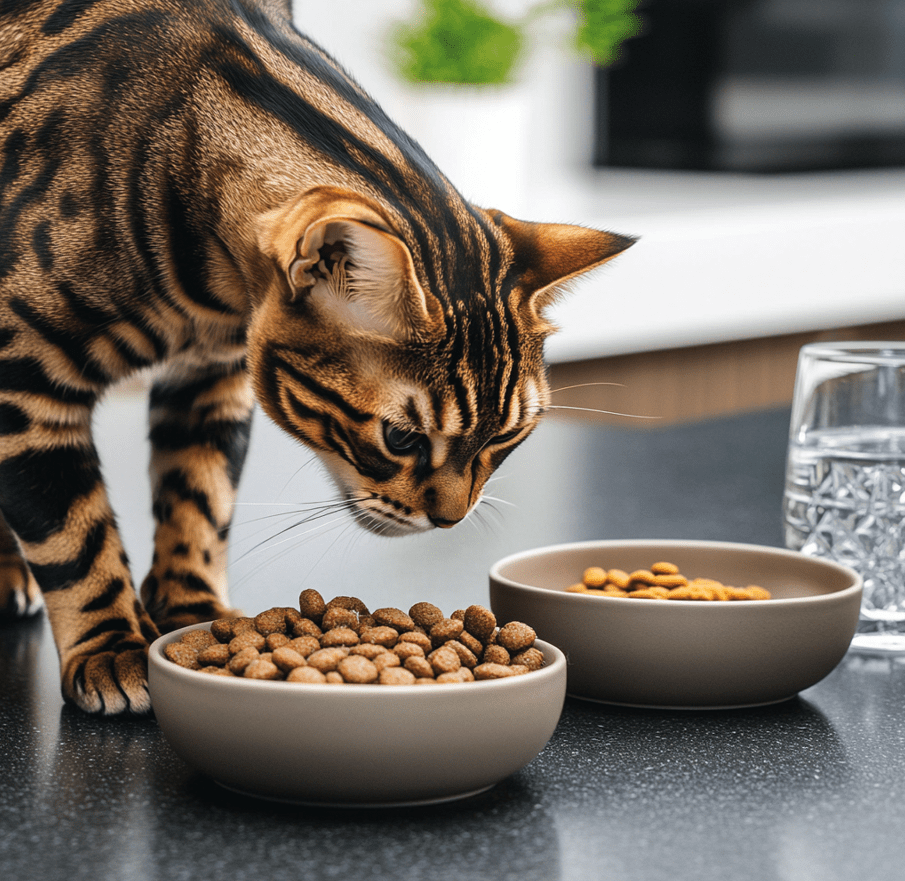
Benefits of Dry Food:
- Convenient for busy owners.
- Can help maintain dental health by reducing tartar buildup.
- Long shelf life.
Drawbacks:
- Low moisture content can contribute to dehydration.
- Higher carb content may lead to weight gain.
Tips for Choosing Dry Food:
- Select grain-free or low-carb formulas.
- Ensure the first ingredient is a high-quality protein source.
- Use dry food as a supplement to wet food or as a treat.
Recommended Brands:
- Orijen Cat & Kitten (grain-free, high-protein)
- Acana Grasslands (biologically appropriate)
- Blue Buffalo Wilderness (grain-free, high-protein)
3. Raw Diets: A Natural Choice for Bengals
Raw diets, also known as BARF (Biologically Appropriate Raw Food), mimic the natural diet of wild cats. They typically include raw meat, organs, and bones, providing a nutrient-dense, species-appropriate diet.
Benefits of Raw Diets:
- High in protein and low in carbs.
- Promotes dental health and a shiny coat.
- Closely resembles a Bengal’s natural diet.
Drawbacks:
- Risk of bacterial contamination (e.g., salmonella) if not handled properly.
- Requires careful preparation to ensure nutritional balance.
- Can be expensive and time-consuming.
Tips for Feeding Raw:
- Purchase commercially prepared raw food from reputable brands like Stella & Chewy’s or Primal.
- Consult a veterinarian or feline nutritionist to ensure the diet is balanced.
- Follow strict hygiene practices when handling raw food.
4. Homemade Diets: Customizable but Complex
Homemade cat food allows you to control the ingredients, but it’s challenging to ensure nutritional balance. Bengals require precise amounts of taurine, calcium, and other nutrients that are difficult to achieve without expert guidance.
Tips for Homemade Diets:
- Work with a veterinary nutritionist to develop a balanced recipe.
- Use high-quality ingredients like chicken, turkey, or fish.
- Include supplements to meet nutritional needs (e.g., taurine, calcium).
Caution: Homemade diets that lack essential nutrients can lead to serious health issues, so professional guidance is critical.
Feeding Guidelines for Bengal Cats
To keep your Bengal cat healthy and prevent obesity, follow these feeding guidelines:
1. Portion Control
Overfeeding is a common cause of obesity. Follow the feeding guidelines on food packaging, but adjust based on your cat’s activity level, age, and weight. A typical Bengal cat needs approximately 20-30 calories per pound of body weight daily.
Example: A 10-pound Bengal requires 200-300 calories per day, depending on activity level.
Divide the daily portion into 2-3 meals to prevent overeating.
2. Monitor Weight Regularly
Weigh your Bengal cat monthly to ensure they maintain a healthy weight. A healthy Bengal should have a visible waistline and a slight abdominal tuck when viewed from the side. If you notice weight gain, reduce portion sizes or consult a veterinarian.
3. Encourage Hydration
Bengals are prone to urinary tract issues, so hydration is critical. In addition to wet food, provide fresh, clean water at all times. Consider a cat water fountain to encourage drinking, as Bengals are often attracted to running water.
4. Avoid Free-Feeding
Leaving food out all day (free-feeding) can lead to overeating. Stick to scheduled meals to control calorie intake and monitor your cat’s appetite.
5. Treats in Moderation
Treats should make up no more than 10% of your Bengal’s daily calorie intake. Opt for healthy treats like freeze-dried meat or single-ingredient options.
Special Considerations for Bengal Cats
Bengal cats have unique traits that influence their dietary needs. Here are some factors to consider:
1. High Energy Levels
Bengals are one of the most active cat breeds, often compared to dogs in their playfulness. Their high energy levels require a calorie-dense diet to fuel their activities. However, inactive or indoor Bengals may need fewer calories to prevent weight gain.

2. Sensitive Stomachs
Some Bengals have sensitive digestive systems, leading to vomiting or diarrhea if fed low-quality food. Choose easily digestible, high-quality foods and introduce new diets gradually to avoid upset stomachs.
3. Age-Specific Needs
Kittens: Bengal kittens need a diet rich in protein and calories to support growth. Feed kitten-specific formulas until they reach 1 year of age.
Adults: Adult Bengals require a balanced diet to maintain weight and energy levels.
Seniors: Older Bengals may need lower-calorie food to prevent obesity and support joint health.
4. Health Conditions
If your Bengal has a medical condition like diabetes or kidney disease, work with your veterinarian to develop a specialized diet. Prescription diets may be necessary in some cases.
Common Mistakes to Avoid When Feeding Bengal Cats
Feeding Human Food: Many human foods (e.g., chocolate, onions, garlic) are toxic to cats.
Choosing Low-Quality Food: Cheap cat food often contains fillers that provide little nutritional value.
Ignoring Portion Sizes: Even high-quality food can lead to obesity if overfed.
Sudden Diet Changes: Transition to new foods gradually over 7-10 days to avoid digestive upset.
Neglecting Dental Health: Poor diet can contribute to dental issues, so include foods or treats that promote oral health.
Supplements for Bengal Cats
While a balanced diet should provide all necessary nutrients, some Bengals may benefit from supplements, especially if fed a homemade or raw diet. Common supplements include:
Taurine: Essential for heart and eye health.
Omega-3 Fatty Acids: Support skin, coat, and joint health.
Probiotics: Promote healthy digestion, especially for Bengals with sensitive stomachs.
Always consult a veterinarian before adding supplements to your cat’s diet.
A Key Component of Weight Management
Diet alone isn’t enough to prevent obesity in Bengal cats. Regular exercise is essential to keep them lean and healthy. Bengals love interactive play, so incorporate activities like:
- Feather wands or laser pointers for chasing.
- Cat trees or climbing structures for exploration.
- Puzzle feeders to stimulate their minds and slow eating.
Aim for at least 20-30 minutes of active play daily to keep your Bengal fit and engaged.
Consulting a Veterinarian
Every Bengal cat is unique, and their dietary needs may vary based on age, health, and lifestyle. Regular veterinary checkups are essential to monitor your cat’s weight, dental health, and overall well-being. Your veterinarian can recommend specific foods or diets tailored to your Bengal’s needs.
Conclusion
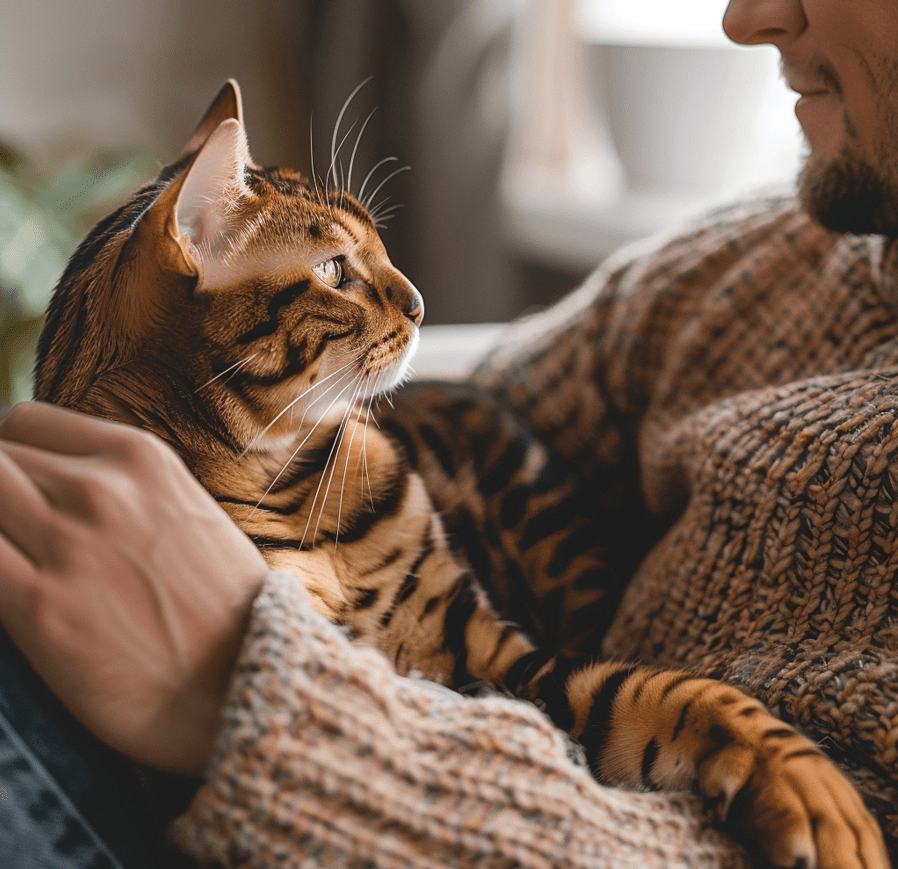
Feeding your Bengal cat the best diet is one of the most important ways to ensure their health and happiness. By prioritizing high-quality, protein-rich foods like wet food or raw diets, monitoring portion sizes, and encouraging hydration and exercise, you can prevent obesity and related health issues. Avoid common mistakes like overfeeding or choosing low-quality food, and consult your veterinarian for personalized advice.
With the right diet and care, your Bengal cat will thrive, showcasing their vibrant personality and stunning appearance for years to come. Invest in their nutrition today, and you’ll be rewarded with a healthy, active, and affectionate companion.

